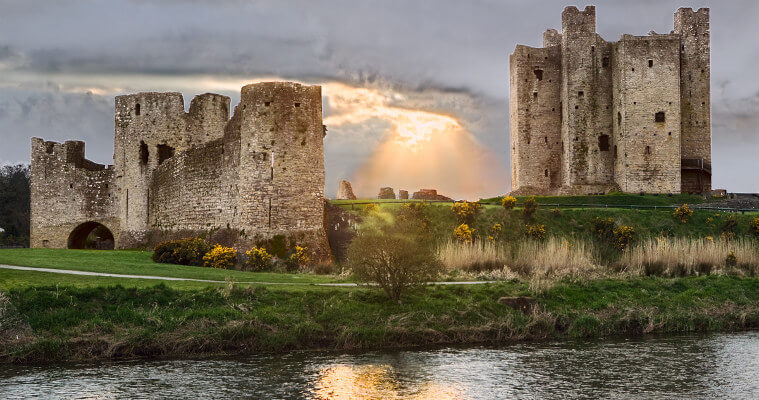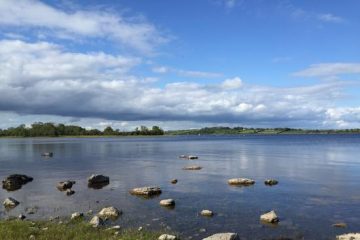Trim Castle, the largest Anglo-Norman castle in Ireland, was constructed over a thirty-year period in the twelfth century by Hugh de Lacy and his son Walter, the Anglo- Norman rulers of Meath. The fortress includes a three storey keep and extensive external walls which extend into the centre of the historic town of Trim. The castle was famously used in the making of the film Braveheart.
The site was chosen because it is on raised ground, overlooking a fording point on the River Boyne. The area was an important early medieval ecclesiastical and royal site that was navigable in medieval times by boat up the River Boyne, about 25 miles from the Irish Sea. Trim Castle is referred to in the Norman poem The Song of Dermot and the Earl.
Hugh de Lacy took possession of it in 1172. De Lacy built a huge ringwork castle defended by a stout double palisade and external ditch on top of the hill. There may also have been further defences around the cliffs fringing the high ground. Part of a stone footed timber gatehouse lies beneath the present stone gate at the west side of the castle.

De Lacy left Ireland entrusting the castle to Hugh Tyrrel, baron of Castleknock, one of his chief lieutenants. The ringwork was attacked and burnt by forces of the Gaelic High King of Ireland, Ruaidrí Ua Conchobair; Tyrrel, having appealed in vain for help, was forced to flee. Ua Conchobair soon withdrew and De Lacy immediately rebuilt the castle in 1173. His son Walter continued rebuilding and the castle was completed c. 1224.




